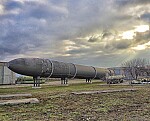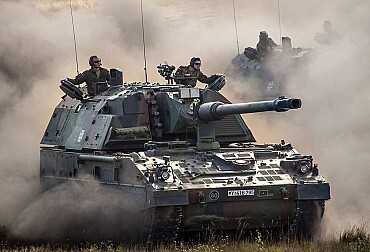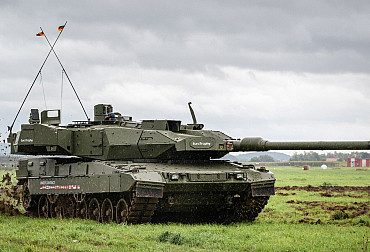Shadows from Space: Chinese Satellites and the Growing Nexus of Sino-Russian Intelligence
In the chilling aftermath of a significant Russian missile and drone strike on western Ukraine on October 5th, an unnerving discovery has cast a long shadow over international relations: at least three Chinese reconnaissance SAR (Synthetic Aperture Radar) satellites were observed making multiple passes over the primary target area. This revelation, brought to light by Militarnyi following an analysis of satellite tracking data, points to a potentially deepening, and highly concerning, intelligence cooperation between Beijing and Moscow.
.png)
The satellites in question belong to the advanced Yaogan 33 series – specifically Yaogan 33, Yaogan 33-03, and Yaogan 33-04. These orbital sentinels executed a remarkable nine passes over the Lviv region alone between midnight and approximately 11:30 a.m. on the day of the attack. Adding to this intense surveillance, the optical Yaogan 34 reconnaissance satellite also entered Ukrainian airspace around 6 a.m., with an anticipated seven orbits over the region throughout October 5th.
An Eye in the Sky: Chinese Reconnaissance Capabilities
While these specific instances highlight a concentrated period of observation over western Ukraine, it is crucial to understand that such activity is not isolated. Chinese reconnaissance satellites routinely traverse Ukrainian skies. With orbital parameters allowing over 60 Yaogan-series satellites to operate over the country, China possesses a vast and comprehensive surveillance capability encompassing optical, radar, and electronic reconnaissance. These satellites reside in low Earth orbit, approximately 700 kilometers up, completing a full rotation around the planet every 90 minutes, providing frequent opportunities for data collection.
Information regarding the precise capabilities of the Yaogan 33 series remains tightly guarded by Beijing, officially described as serving "scientific experiments, land resource research, and disaster prevention." However, intelligence analysts widely believe them to be sophisticated military reconnaissance satellites, likely equipped with advanced synthetic aperture radar systems akin to Western platforms like ICEYE. Given the more than 15-year technological leap from the earlier Yaogan-1 (known to have an L-band SAR system with impressive 5-meter resolution), it is reasonable to assume that the newer Yaogan 33 series boasts capabilities far superior, potentially rivalling modern Western reconnaissance systems.
Despite the observed presence, a definitive answer to whether these satellites were actively conducting reconnaissance specifically duringtheir passes over Ukraine on October 5th remains elusive. Yet, the circumstantial evidence, combined with earlier intelligence reports, paints a troubling picture.
The Tangled Web of Sino-Russian Intelligence Sharing
The Ukrainian Foreign Intelligence Service issued a stark report in early October 2025, providing evidence that China has indeed been supplying Russia with satellite reconnaissance data for missile strikes on Ukraine. This data, according to Oleh Alexandrov, a representative of the Ukrainian Foreign Intelligence Service, has been used to identify and target strategic sites, including facilities owned by foreign investors. While specifics on the targeted sites remain undisclosed, the accusation underscores a "high level of interaction" between the two nations in prosecuting the war.
This is not a new claim. Reports of China providing Russia with intelligence from its own satellites for use in Ukraine first surfaced in 2024, though the precise extent of the cooperation was initially unclear. U.S. intelligence has since corroborated these concerns, indicating that China is providing Russia with "all necessary intelligence information," which is reportedly being utilized not only in the war against Ukraine but also for monitoring NATO troop movements across Europe.
Perhaps the most concrete evidence of direct Chinese support for Russian military operations through satellite technology emerged with the revelation that a company linked to the Wagner Group, the notorious Russian private military company, purchased two high-resolution surveillance satellites from the Chinese space company Chang Guang Satellite Technology (CGST) in 2022. This deal, valued at over $30 million, was struck between Beijing Yunze Technology Co. and Nika-Fruit LLC (then part of Yevgeny Prigozhin's business network). Crucially, the contract included not just the satellites but also access to on-demand imagery from CGST's broader satellite network, with the data used to support Wagner's operations in both Ukraine and Africa.
Implications for Global Security
The convergence of intensified Chinese satellite activity over Ukraine during Russian strikes and mounting intelligence reports of direct satellite data sharing paints a concerning portrait of an evolving geopolitical landscape. This strategic cooperation, particularly the alleged targeting of foreign investor sites, not only deepens Russia's capabilities in Ukraine but also raises significant questions about China's role in the conflict and its broader alignment with Moscow against Western interests.
As the lines between commercial and military space assets blur, and as nations leverage advanced satellite technology for geopolitical advantage, the skies above Ukraine serve as a chilling testament to a new era of space-based intelligence and the complex web of alliances that are reshaping global security. The "shadows from space" cast by Chinese satellites are a potent reminder of the silent, yet significant, battles being waged above us.









